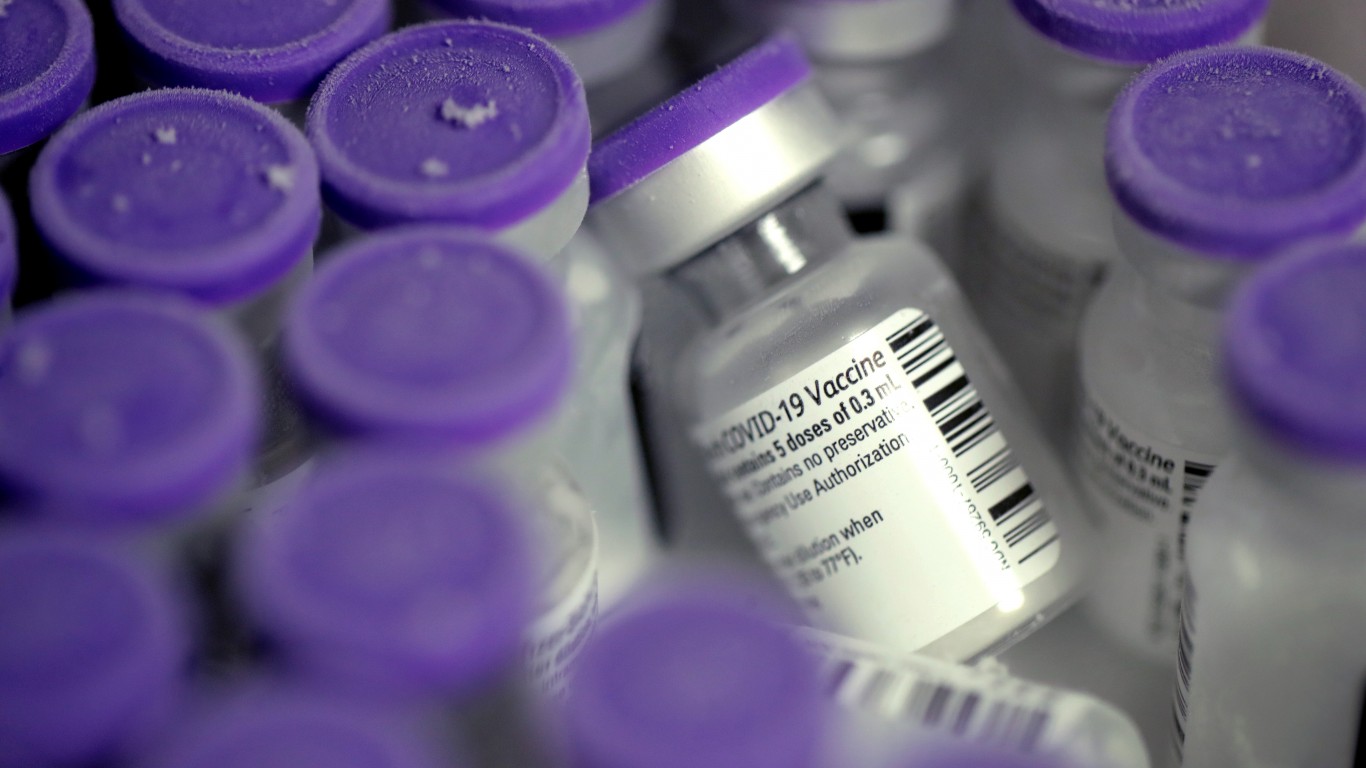Health and Healthcare
This State Is Getting the Fewest COVID-19 Vaccines From the Federal Government

Published:

The United States is in the fourth wave of the COVID-19 pandemic. In early summer, it appeared that the third wave had been the last, as vaccination rates rose sharply across the country most weeks. There was increasing talk about the strong chance of reaching herd immunity and that the disease might nearly disappear. A new disease variant called Delta helped dash those hopes. It spread more easily than earlier variants. As it infected more and more Americans, the improvement in vaccination rates began to slow. The new spread was so rapid and damaging that in recent days over 2,000 Americans have died from the disease.
While the initial distribution of the vaccine took longer than federal projections had indicated, in recent months the United States has made great leaps in the worldwide race to administer vaccinations. Yet, some states are faring far better than others. Under the current system, led by the White House COVID-19 Response Team, the Centers for Disease Control and Prevention (CDC) sends states limited shipments of the vaccine, as well as funding, and tasks them with distributing the vaccine in accordance with relatively loose federal guidelines. The distribution of the vaccine is based on the size of the adult population in every state. According to some experts, that can create inequities in states where a larger share of the population is at risk.
One state has received the fewest vaccines based on the number per 100,000 people. At this stage of the vaccine rollout, the distribution of the vaccine varies widely from state to state. While the CDC has so far sent out an average of 142,140.6 vaccine doses per 100,000 Americans, West Virginia has received 164,481 doses per 100,000 residents, the most of any state. Wyoming has received 111,382 doses per 100,000, the fewest of any state.
While the federal government distributes vaccines to states, it is up to state governments to administer the vaccine. That creates variations in the percentages of both vaccines administered and the population vaccinated. In New Mexico, 95.9% of vaccine doses have been administered, the most of any state and far greater than the 82.6% national average. In West Virginia, 52.0% of vaccine doses have been administered, the least of any state.
At this stage of the rollout, the number of doses administered in Vermont is equivalent to 142.4% of the state population, the largest share of any state. The lowest vaccination rate is in Idaho, where 85.4% of residents have received a dose of the vaccine. Nationwide, the number of doses administered is equivalent to 117.5% of the U.S. population.
To determine the states getting the fewest vaccines from the federal government, 24/7 Wall St. reviewed data from the CDC. States were ranked based on the number of vaccines administered, as of September 19, per 100,000 residents. Vaccine counts were adjusted for population using one-year data from the Census Bureau’s 2019 American Community Survey (ACS). Data on confirmed COVID-19 cases as of September 19 came from various state and local health departments and were adjusted for the population using 2019 ACS data. Data on the percentage of adults who probably or definitely will not get a COVID-19 vaccine and their reasons for that came from the Census Bureau’s Household Pulse Survey, conducted from August 18 to August 30, 2021.
Click here to see which states receive the most COVID-19 vaccine from the federal government.
The last few years made people forget how much banks and CD’s can pay. Meanwhile, interest rates have spiked and many can afford to pay you much more, but most are keeping yields low and hoping you won’t notice.
But there is good news. To win qualified customers, some accounts are paying almost 10x the national average! That’s an incredible way to keep your money safe and earn more at the same time. Our top pick for high yield savings accounts includes other benefits as well. You can earn up to 3.80% with a Checking & Savings Account today Sign up and get up to $300 with direct deposit. No account fees. FDIC Insured.
Click here to see how much more you could be earning on your savings today. It takes just a few minutes to open an account to make your money work for you.
Thank you for reading! Have some feedback for us?
Contact the 24/7 Wall St. editorial team.